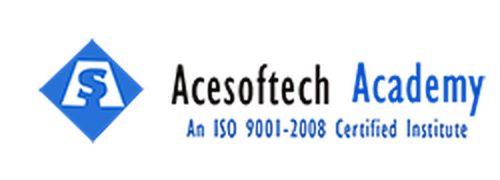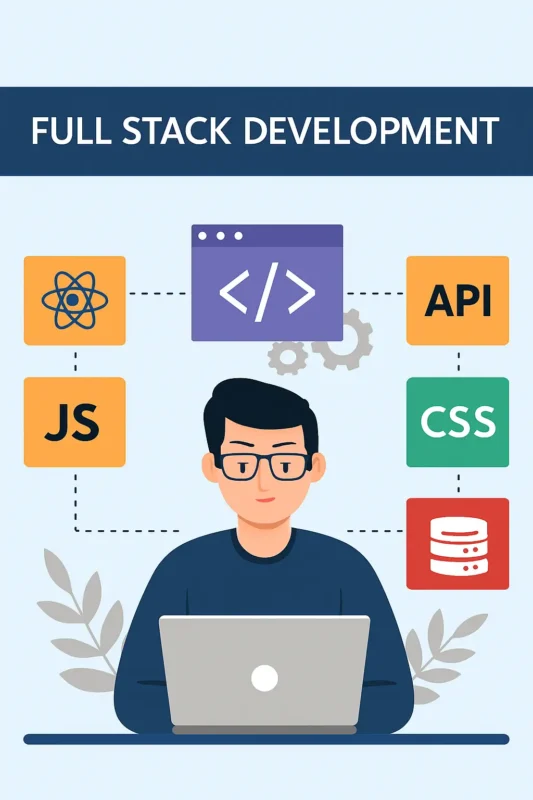How to Excel in Full-Stack Development: Key Concepts and Practices
Entering the world of modern software engineering can feel overwhelming, but with the right Full-Stack Development Guide and a structured approach, any learner can grow into a capable developer. In this article, we’ll explore a complete roadmap that acts as a Full-Stack Developer Handbook, giving beginners and aspiring engineers the clarity they need to excel. Full-stack development is the art of building both the frontend and backend of web applications—mastering languages, tools, systems, and best practices that power today’s digital experiences.
This field is evolving faster than ever. Businesses are moving toward dynamic platforms, interactive dashboards, real-time apps, and cloud-based systems. As a result, talented full-stack developers are becoming some of the most sought-after professionals in tech. Whether you’re just starting and want to Learn Full-Stack Development, or you’re seeking higher-level insights through a Full-Stack Web Development Tutorial, this guide offers practical, actionable advice suitable for all levels.
In the sections below, we’ll break down essential concepts, core skills, beginner-friendly strategies, and advanced techniques to help you move confidently through the Full-Stack Development for Beginners journey. You’ll also discover recommended tools, must-learn technologies, and industry insights that will prepare you for a successful development career. Let’s dive deep into the practices and principles that will help you excel as a modern full-stack developer—and stay competitive in a field where innovation never stops.
1. Learning Full-Stack Development: A Path to Becoming a Pro
Learning full-stack development is not just about writing code—it’s about understanding the full lifecycle of software creation. A Full-Stack Development Guide teaches you to work on both client-facing features and server-side logic.
A successful developer begins by mastering the basics: HTML, CSS, and JavaScript on the frontend; Node.js, Python, Ruby, or PHP on the backend. From there, frameworks like React, Vue, and Angular help streamline UI creation, while backend frameworks such as Express, Django, and Laravel simplify server operations.
One key habit of future professionals is consistent practice. Build small apps, experiment with APIs, and refine your debugging skills. Over time, you’ll create a portfolio that demonstrates your capabilities from end to end.
2. Key Skills Every Full-Stack Developer Must Master
Becoming a great full-stack developer requires mastering several must-have skills. These include:
Frontend fundamentals: DOM manipulation, responsive design, component-based architecture.
Backend logic: APIs, authentication, routing, middleware.
Database management: SQL vs. NoSQL, normalization, indexing.
Version control: Understanding Git branching, merging, resolving conflicts.
Deployment: CI/CD pipelines, Docker, and cloud services like AWS or Azure.
Each concept strengthens your ability to create complete, functioning applications. Combine these skills with a reliable Full-Stack Developer Handbook, and your learning curve becomes more manageable.
3. Full-Stack Development Made Easy: A Beginner’s Guide
A Full-Stack Development for Beginners guide should simplify the journey into easy-to-follow steps. Start by learning how the internet works—HTTP methods, DNS, and hosting. Then move toward simple projects like to-do apps or landing pages.
For beginners, it’s important to use structured learning paths. Many resources, including trusted reference sites such as Wikipedia
, provide helpful context for understanding programming paradigms, frameworks, and foundational technologies.
To Learn Full-Stack Development, you must pair theory with practice. Don’t just read—build. Experiment. Break things. Fix them. That’s how true learning happens.
⚙ 4. Building Scalable Web Applications with Full-Stack Development
Scalability is at the heart of long-lasting web applications. A strong Full-Stack Web Development Tutorial will explain how to structure your software so it can handle growth. This includes:
Efficient database queries
Caching strategies
Load balancing
Asynchronous programming
Microservices architecture
Scalable apps don’t slow down as users increase. They respond fast, handle errors gracefully, and maintain reliability.
Using cloud-native technologies and distributed systems can dramatically improve performance. As you advance, these concepts become essential to your developer toolkit.
5. Mastering Full-Stack Development: A Complete Guide
Mastery comes from depth, not speed. Developers who follow a Full-Stack Development Guide or Full-Stack Developer Handbook tend to grow systematically. To achieve mastery:
Dive deep into frameworks. Understanding how React or Express works behind the scenes sets you apart.
Improve your debugging. Strong debugging skills are a superpower in full-stack engineering.
Adopt best practices. Code readability, modularity, and maintainability matter greatly.
Strengthen your architectural skills. Knowing how to structure systems is more valuable than memorizing syntax.
Full-stack mastery requires time, curiosity, and consistent practice—but it’s a highly rewarding journey.
6. Why Full-Stack Developers Are in High Demand
Tech companies value full-stack developers because they reduce dependency on multiple specialists. They bridge communication gaps and accelerate product creation.
As digital transformation expands across industries, job postings increasingly request developers who understand both frontend and backend processes. The ability to manage databases, build UIs, handle APIs, and integrate cloud services makes full-stack developers highly adaptable.
This versatility creates better opportunities, higher salaries, and involvement in more interesting projects.
7. The Future of Full-Stack Development: Innovations and Trends
The future is bright for full-stack engineering. Key innovations include:
AI-assisted coding
Low-code development workflows
Cloud-native architectures
Serverless computing
Real-time collaboration platforms
As these technologies evolve, guides like the Full-Stack Development Guide and the Full-Stack Developer Handbook will continue adapting to help new learners stay ahead.
8. From Frontend to Backend: The Full-Stack Development Journey
Every full-stack developer follows a journey—from learning interfaces, styles, and components on the frontend to mastering APIs, servers, and databases on the backend.
To Learn Full-Stack Development, take this journey one milestone at a time:
Structure your HTML and style your pages.
Add behavior using JavaScript.
Build backend logic and handle requests.
Connect your app to a database.
Deploy and optimize your application.
This structured path leads to confidence and creativity in your projects.
9. The Top Full-Stack Development Courses to Get Started
Beginners searching for the best Full-Stack Web Development Tutorial can start with reputable online platforms. Popular options include:
FreeCodeCamp
Codecademy
Coursera
Udemy
The Odin Project
These platforms offer hands-on lessons, projects, and assessments—effective for anyone following a Full-Stack Development for Beginners learning plan.
10. Building Robust Web Apps with Full-Stack Development
Robust applications don’t just work—they perform well under pressure. They’re secure, scalable, and easy to maintain. Use solid backend architectures, choose reliable databases, and build responsive frontends with clean UI/UX patterns.
The strongest developers combine coding expertise with thoughtful planning, making them invaluable to any engineering team.
Summary
Mastering full-stack development doesn’t happen overnight, but with the right Full-Stack Development Guide and consistent practice, you can grow into a skilled and confident engineer. Whether you’re using a Full-Stack Developer Handbook, exploring a Full-Stack Web Development Tutorial, or following a Full-Stack Development for Beginners track, the key is to learn step-by-step, build real projects, and stay curious. Full-stack development remains one of the most rewarding and in-demand paths in tech—now is the perfect time to begin your journey.

